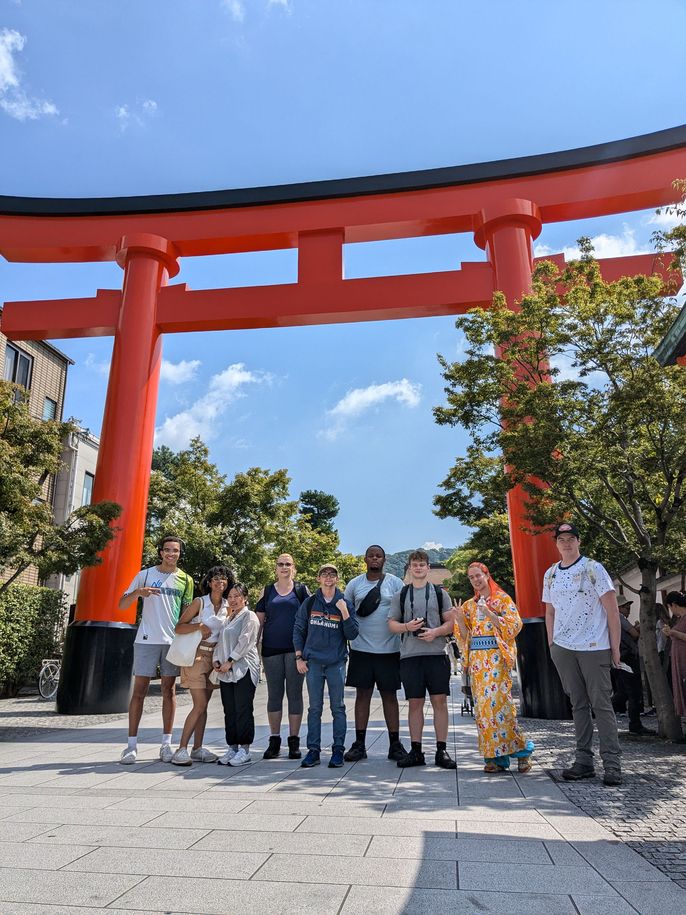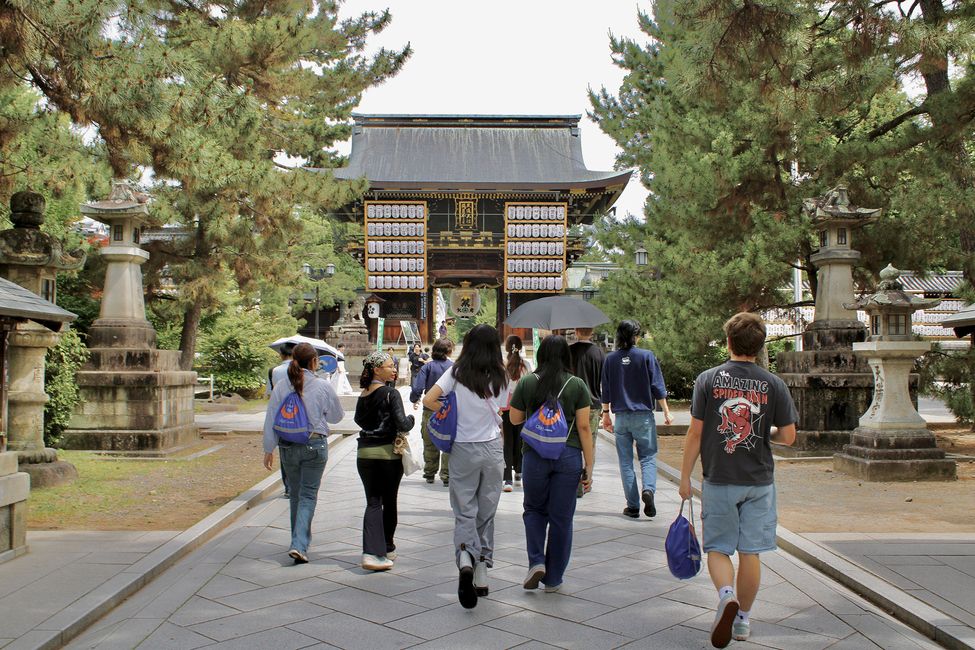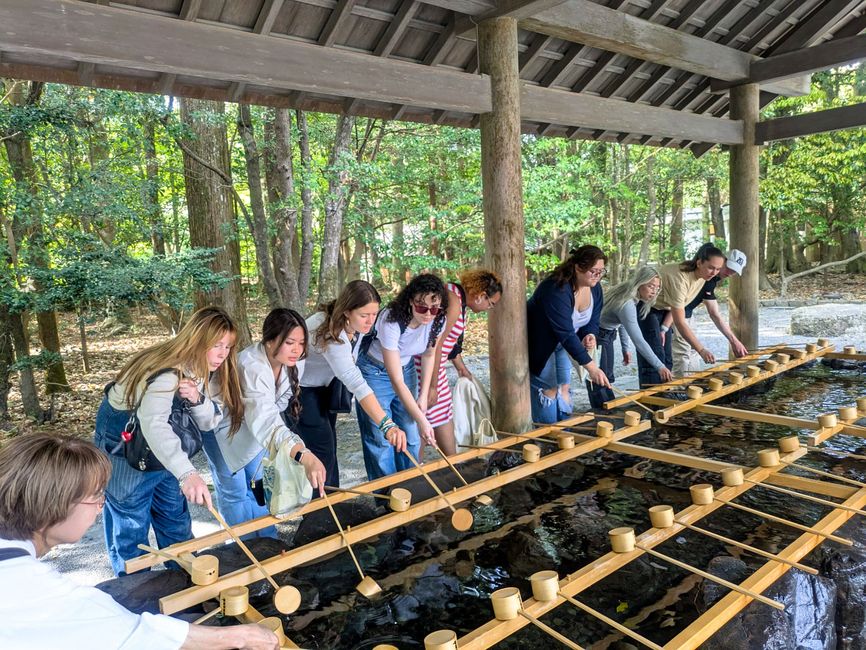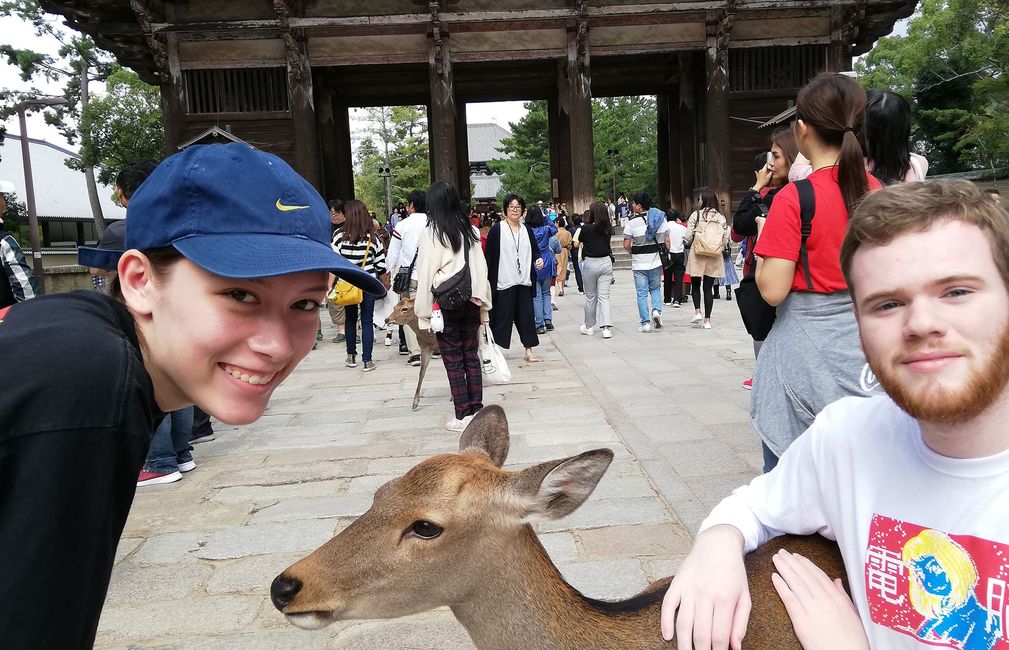EAT, DRINK, EXPLORE: KYOTO
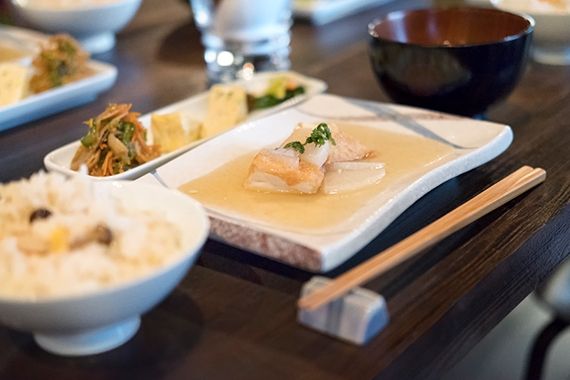
BEST FOOD TO EAT IN KYOTO
Obanzai is a traditional style of Japanese cuisine featuring small plates that’s native to Kyoto. Think of obanzai as Kyoto’s take on Spanish tapas. For food to be considered obanzai, the plates must follow a few guidelines: the ingredients used must be in season; at least half of the ingredients must be produced or processed in Kyoto; and ingredients that would otherwise be discarded as waste should be incorporated (like the skins of vegetables and pieces of dried bonito). Since Kyoto is home to 32 kinds of fresh and local vegetables, it’s common to find eggplant, spinach, and tomatoes in many obanzai plates. Expect obanzai restaurants to serve food like miso soups, pickled and root vegetables, sushi, deep-fried tofu, and stews.
Top Cultural Foods To Try in Kyoto
Here are some of the top traditional foods to try while you're studying in Kyoto:
- Kaiseki: To truly experience the peak of Japanese culinary art, you'll want to try a Kaiseki meal. This is a traditional multi-course dinner that is all about harmony, balance, and using seasonal ingredients. It's an amazing dining experience that really showcases Kyoto's culinary history!
- Nishin Soba: This unique local dish is a must-try for visitors. Nishin Soba is a simple bowl of warm soba noodles served in a hot broth with a piece of simmered herring on top. Plus, it's a very traditional and beloved dish for locals!
- Yudofu: This dish perfectly highlights the simplicity and purity of Kyoto's food culture. Yudofu is a very simple meal of silken tofu that is simmered in a light broth and served with various dipping sauces, making a healthy meal that reflects the city's strong Buddhist traditions.
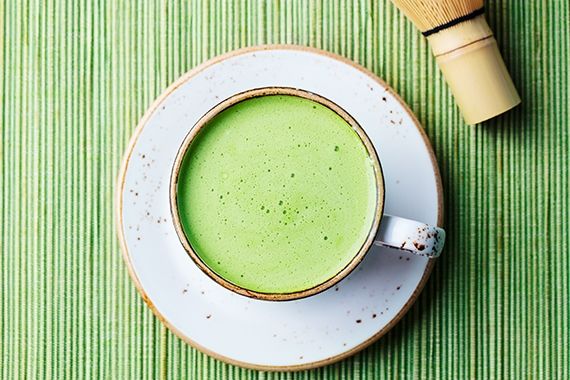
BEST DRINK IN KYOTO
The world’s finest matcha is said to come from Kyoto. Uji matcha (宇治抹茶), specifically, is considered the highest quality of Japanese green tea. Its abundant green tea leaves thrive in Kyoto’s environment, courtesy of its hilly terrain, excellent soil, mild temperatures, and prevalent mist. A cup of vibrant green Uji matcha conveys a mildly buttery profile, with a sweet aftertaste. Not only is Kyoto home to the world’s highest grade matcha – it’s also the birthplace of the Japanese tea ceremony. Select Kyoto temples offer tea ceremonies in which they serve you matcha while overlooking lovely zen gardens. Consider visiting Nanzen-ji Temple or Shoren-in Temple for this unique experience!
Top Cultural Drinks To Try in Kyoto
Here are some of the top traditional drinks to try while you're studying in Kyoto:
- Uji Matcha: Kyoto is the birthplace of the most famous green tea in Japan! Uji Matcha is a high-quality powdered green tea that has a rich, earthy, and slightly bittersweet flavor. Trying a bowl of fresh matcha is a must-have experience, especially during a traditional Japanese tea ceremony.
- Local Sake (Nihonshū): Kyoto has been a major sake-brewing region for centuries, thanks to its pristine water sources. Taking a tour of a local brewery is a great way to see how this rice wine is made, and you can try a variety of different sakes from sweet to dry types to find your favorite.
- Hōjicha: For a different kind of tea experience, try Hōjicha. This is a green tea that has been roasted over charcoal, and it has a distinctive reddish-brown color with a smoky and nutty flavor. It’s a very comforting and popular drink, especially on cool evenings!
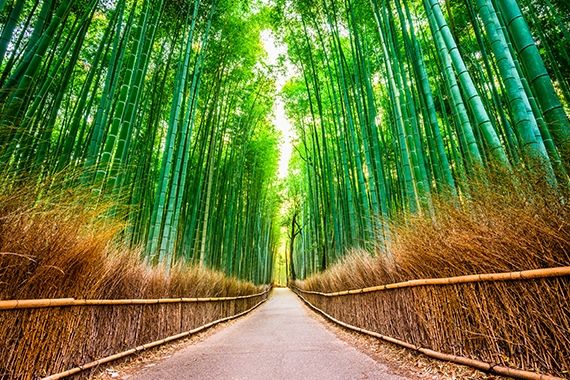
BEST PLACE TO EXPLORE IN KYOTO
Step into Arashiyama Bamboo Grove, one of Kyoto’s most photographed sites and main attractions. Pictures don’t do this forest justice – standing in the midst of this sprawling bamboo grove will make you feel like you’re in another world. Arashiyama is located in the far west of Kyoto, roughly 30 minutes from the city center by train, bus, or taxi. When you arrive, follow the main path through the grove that slowly leads you uphill. Lush bamboos stand nearly 100-feet tall, towering on both sides of the trail. The bamboo stalks naturally dim the sunlight and rustle in the breeze, giving the trail a sense of quiet and calm. Arashiyama is also home to several significant temples, huts, and villas. Complete your visit by exploring some of these landmarks, especially Tenryu-ji Temple, which is one of Kyoto’s 17 UNESCO World Heritage Sites.
Top Cultural Attractions to Visit in Kyoto
Here are some of the top cultural attractions to visit while you're studying in Kyoto:
- Kinkaku-ji: This is one of the most famous sights in Kyoto for a reason. Kinkaku-ji, or the Golden Pavilion, is a stunning Buddhist temple with its top two floors completely covered in gold leaf. The building reflecting in the surrounding pond is a breathtaking sight, and makes a great photo op.
- Fushimi Inari-Taisha: Try out a beautiful and scenic hike! Fushimi Inari is a shrine with thousands of vibrant red orange torii gates that form a winding path up the surrounding mountain. Walking through this tunnel of gates is a magical experience, and it is certainly one of the most memorable places to visit.
- Kiyomizu-dera: This historic Buddhist temple is famous for its massive wooden stage that juts out over a hillside. It’s a beautiful temple complex that offers an incredible view of the city, and unique history to discover. The name means "Pure Water Temple" because of its waterfall, which is believed to have healing properties!
Related Posts
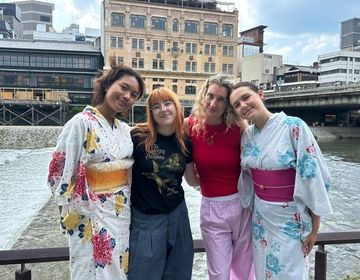
More Than Temples and Onigiri: What I Truly Found in Kyoto
Written by: Madalynn Vaine Going into CIEE Kyoto, I truly didn’t know what to expect. I imagined temples, amazing food, and a culture vastly different from anything I had experienced... keep reading

How to Study Abroad in Japan: 4 Simple Steps
Japan is an extraordinary country – one of the oldest in the world – and it will surprise and delight you at every turn. If you choose a Japan study... keep reading
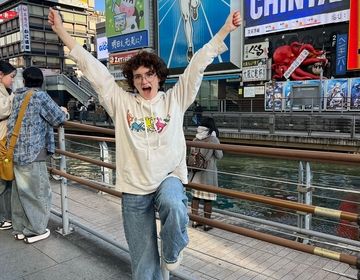
Travelogue Across Japan: Part 2
《This is Part 2 of Sofia's Travelogue. If you haven't read Part 1 yet, be sure to check it out first!》 Awajishima & Kagawa (Hyogo & Kagawa Prefectures, Kansai &... keep reading

